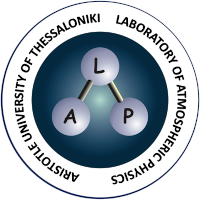This study aims at quantifying the effect of different aerosol types on sunburning solar ultraviolet (UV) radiation, quantified by the UV Index (UVI), using global simulations with a radiative transfer model which are based on aerosol optical depth data derived from the GFDL-ESM4 model. The reductions in UV radiation due to the presence of aerosols show a strong regional variability, with the largest effect caused by organic aerosols and dust, followed by black carbon, while sulfates and sea salt have a minor influence. In the 1950s and 1990s decreases in the UVI are dominated by the presence of organic aerosols mainly over Western S. America (−3.9 UVI units) and South and East Asia (−1.9), as well as by dust in Northern Africa (−3.8). Despite its low optical depth (0.08), the effect of black carbon on UVI is significant in specific regions (e.g., Central Africa and South and East Asia in the 1950s and India in the 1990s.
Aerosol decreases from the 1990s to the 2090s under the SSP1–2.6 scenario result in UVI increases, by up to ∼5 over South and East Asia due to decreases in organics and black carbon. Under SSP3–7.0, the UVI changes are mostly negative worldwide, primarily due to increases in organics. Finally, under SSP5–8.5, UVI increases mainly in Asia, Europe, and the Southern S. America due to decreases in black carbon, sulfates, dust and organics, while in other regions the UVI changes are negative driven by increases in organics.
Chatzopoulou, A., K. Tourpali, A. F. Bais, and P. Braesicke
Atmos. Environ., 121595,2025


